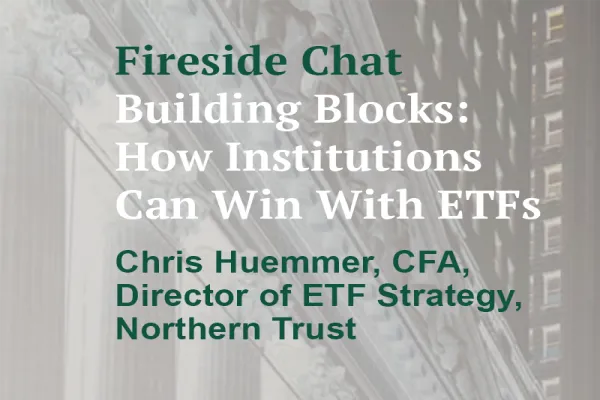The concentration of the world’s largest 7 stocks are troublingly all in one sector, making true diversification all the more elusive for institutional investors.
One of the more significant and concerning trends in recent years has been the rise of market cap-weighted indexes, which have led to increased concentration in just a few dominant stocks, mostly in the technology sector. Due to their outsized market capitalizations, these stocks, dubbed “The Magnificent 7” (Mag 7) and comprised of Meta, Amazon, Apple, Tesla, Alphabet, Microsoft, and Nvidia, hold a disproportionate influence on the market-cap weighted Nasdaq Composite and S&P 500 indexes. Institutional Investor sat down with Philip Seager, Head of Portfolio Management at systematic investment manager CFM to learn why this trend is risky, and how to genuinely diversify in an increasingly correlated market.
Institutional Investor: Market cap weighted indexes are great for scaling equity premia, but this leads to position concentration in the biggest stocks, particularly the Mag 7 tech stocks. This increases systemic risks and reduces diversification, but what happens when these stocks become correlated or enter a bubble?
Philip Seager: Let’s touch on the general systemic risk from the Mag 7. This trend really hit the headlines in 2023. When I looked at X (formerly Twitter), I frequently saw comparisons between the top seven stocks and the S&P 500 excluding those seven. In 2023, all the performance of the S&P 500 was coming from the Mag 7 stocks, while the rest of the index was flat. If you extend this exercise over a longer history and look at the top seven market cap stocks over time, you see that the outperformance of these top stocks is really just a blip in 2023. Over a longer history, there’s no significant outperformance, and by the end of 2023, the S&P 500, excluding the top seven, actually picked up and outperformed the Mag 7. It’s a statistical non-event in the long term, but there is a story here about market cap weighting and systemic risk.
II: What are the dangers with market cap weighting considering the influence the Mag 7 have?
PS: Market cap weighting on the one hand is efficient for financial engineering as it requires minimal rebalancing making it cost-effective for equity index providers, however this system also results in allocating more to the largest stocks, like the Mag 7. As these top stocks grow, their market cap increases, leading to greater weight in the index and higher concentration in investor portfolios. This of course reduces sector diversity, as the top stocks are recently tech-concentrated, and increases correlation among these stocks over time. Higher correlation and increased weighting mean institutional investors face more risk in their portfolios. This concentration effect isn’t only confined to the US, however; it’s observed globally in other equity indices as well. The sheer size of the U.S. market amplifies this effect, making it a clear source of systemic risk.
II: So this concentration effect is seen in other markets as well?
PS: This concentration effect exists in other markets like Switzerland, South Africa, Korea, and even Europe with countries like France and Germany. However, the US stock market is much larger, so the top US stocks are significantly bigger than the top stocks in other markets. This means institutional investors with worldwide portfolios end up predominantly exposed to the US market and therefore the Mag 7, amplifying the systemic risk further.
II: Have there been shifts in this status quo?
PS: Interestingly, Berkshire Hathaway’s market cap gets it close to the Mag 7, especially with a decline in some of the names, such as Tesla, but it hardly has the same tech credentials. NVIDIA have taken off massively however, maintaining the concentration in tech in the S&P 500.
II: How does one truly diversify in such a concentrated market environment?
PS: At CFM, we offer products to help clients achieve true diversification. In a traditional setting, diversification is often achieved through a mix of equities and bonds, like the 60/40 portfolio. However, post-COVID-19, with rising inflation and rising correlations between bonds and equities, this strategy is less effective. What’s happened post-COVID-19 is inflation has gotten to levels where bonds are somewhat unattractive. The other thing that’s happened is the correlations between bonds and equities has gone from quite a robust negative number to a positive number. So, you’re not getting the “anti-correlation” that you used to have in that combination, which was very good when equities were selling off and you could go and make money on your bonds. These days, that doesn't tend to be the case - when equities are selling off, your bonds are selling off as well.
Many institutional investors are moving into private markets, but this is essentially a leveraged illiquid play on equity premium. It’s not really a diversifier. True diversification can be achieved through market-neutral or long/short portfolios, which are zero-correlated with traditional benchmarks. I’m sure there are other diversifying investments available, but certainly the products that we run are genuine diversifiers, meaning lowly correlated with equities and bonds.
II: Can you speak a bit more on how you achieve low correlation?
PS: One thing investors can do is build a market-neutral portfolio. So, going equally long and short. This means gains on the long side are offset by losses on the short side, and vice versa, maintaining zero correlation with the market. Another approach is what we call a directional portfolio, where you spend half your time long and half your time short on equity index futures (among others), averaging out to zero correlation over the long term.
II: Are institutional portfolios utilizing these strategies as much as they should be?
PS: We believe they are not. Some institutions can’t invest in hedge funds due to regulatory oversight. However, the strong performance of traditional markets over the past 10-15 years has also led to a behavioral bias against diversification. If equity markets continue to perform well, there’s also the added career risk in diversifying away from what everyone else is doing, as there is always the possibility it may seem like a poor decision in hindsight.
II: Everyone has been discussing the sustainability of the equity market’s rise. Without many viable alternatives and with equities performing well, why exit the asset class? Given the significant interest rate changes, do you foresee a market shift within the next year, and could we see renewed interest in certain strategies once interest rate movements happen again?
PS: I cannot predict the market’s future, but there’s a lot of geopolitical uncertainty, which makes optimism difficult. I’m unsure about the future - market uncertainty will likely impact economic performance eventually.
II: The S&P 500 is heavily concentrated with Mag 7 stocks, but what about the old adage “concentrate to get rich, diversify to stay rich”?
PS: Albeit difficult to prove (in the absence of data) anecdotal evidence suggests that concentrating investments can lead to substantial gains, but it’s risky and is not a recipe for getting rich. It doesn’t mean you should not diversify, but in order to become the richest, you need to concentrate, putting all your eggs into one basket, increasing risk and either getting very wealthy or losing everything! Look at Elon Musk for example, who put all of his stock in Tesla, concentrated his investment, and became rich. So, either you lose everything, or you make tons and become the richest person in the world.
Interestingly, in the context of the stock market, the largest market cap stocks get to be the largest market cap stocks by concentrating. As they grow and mature, their volatility decreases, indicating diversification. Our data shows that younger, mega-cap stocks are actually the most volatile and concentrated, but through time, they diversify and reduce their volatility. This supports the idea that concentration leads to growth, while diversification maintains stability. As a stock gets bigger, it’s going to start selling other products or services – you can think of a big stock as being like the sum of a lot of small stocks, thus diversifying the business leading to reduced volatility as market cap increases. So, there is some level of safety in owning mature mega-cap stocks, but working against diversification is a concentration in similar business models, as is the case for the Mag 7.
DISCLAIMER
ANY DESCRIPTION OR INFORMATION INVOLVING MODES, INVESTMENT PROCESSES OR ALLOCATIONS IS PROVIDED FOR ILLUSTRATIVE PURPOSES ONLY AND DOES NOT CONSTITUTE INVESTMENT ADVICE NOR AN OFFER OR SOLLICITATION TO SUBSCRIBE FOR ANY SECURITY OR INTEREST. ANY STATEMENTS REGARDING CORRELATIONS OR MODES OR OTHER SIMILAR BEHAVIORS CONSTITUTE ONLY SUBJECTIVE VIEWS, ARE BASED UPON REASONABLE EXPECTATIONS OR BELIEFS, AND SHOULD NOT BE RELIED ON. ALL STATEMENTS HEREIN ARE SUBJECT TO CHANGE DUE TO A VARIETY OF FACTORS INCLUDING FLUCTUATING MARKET CONDITIONS AND INVOLVE INHERENT RISKS AND UNCERTAINTIES BOTH GENERIC AND SPECIFIC, MANY OF WHICH CANNOT BE PREDICTED OR QUANTIFIED AND ARE BEYOND CFM’S CONTROL. FUTURE EVIDENCE AND ACTUAL RESULTS OR PERFORMANCE COULD DIFFER MATERIALLY FROM THE INFORMATION SET FORTH IN, CONTEMPLATED BY OR UNDERLYING THE STATEMENTS HEREIN. CFM ACCEPTS NO LIABILITY FOR ANY INACCURATE, INCOMPLETE OR OMITTED INFORMATION OF ANY KIND OR ANY LOSSES CAUSED BY USING THIS INFORMATION. CFM DOES NOT GIVE ANY REPRESENTATION OR WARRANTY AS TO THE RELIABILITY OR ACCURACY OF THE INFORMATION CONTAINED IN THIS DOCUMENT.






